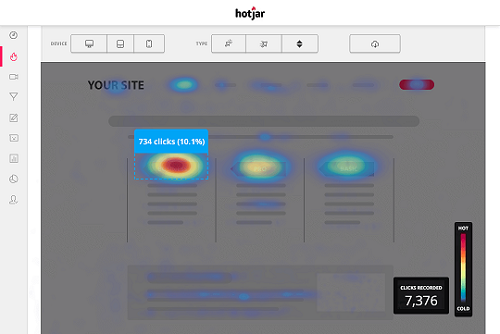BuzzFeed Set Out to Revolutionise Sharing Analytics with Pound
Hive-Feed
 |
| niemanlab.com |
In ye olden times, putting out content was as simple as
publishing it and distributing it involved paying people to throw it around
elsewhere and/or say it’s great even if it’s not. Now it’s a maze of social
media sharing and stats tracking and it’s difficult to tell exactly how well
you’re doing. Even with analytics trackers, you can only really observe how
well a post is doing on a particular platform, rather than across multiple
ones. Now BuzzFeed of all people have stepped with a new formula, meet Pound.
An acronym for Process for Optimizing and Understanding
Network Diffusion, Pound "follows propagations from one sharer to another,
through all the downstream visits, even across social networks and one-to-one
sharing platforms like Gchat and email." According to BuzzFeed founder Dao
Nguyen. What this means in human speak is that Pound can track and collect
information about how well a post is doing for clicks and shares universally,
rather than just for Facebook, Twitter or wherever else. That might not seem
like a big deal, but it is.
 |
| buzzfeed.com |
See, it might seem as if once a post is shared on Facebook,
Facebook is where it stays, being liked and re-shared between friends and
connections but of course this isn’t necessarily the case. It might then be
shared in a private message, and then put on Pinterest as a result of that,
then forwarded in an email, by which point the stats trackers usually give up
and go to the pub. The digital pub, I guess, this metaphor is getting away from
me.
Pound is capable of processing over 10,000 web requests in a
single second and whilst BuzzFeed have only just unveiled it publically, it’s
been collating data for them for a while. A lot of data. It follows an
anonymous hash nestled in the post’s share URL and latches on a like a remora,
sending back information as the post travels like a bat sending sonic signals
and creating a detailed web of vital analytic info like some kind of crazy
techno-spider. That was a lot of animal similes for one sentence, I apologise,
but you get the gist.
 |
| fastcompany.com |
Remora-bat-spiders aside, the information can be used to
assess which posts should be optimised for Facebook, Twitter, Pinterest and
wherever else as well as how to better tailor content for organic searches and
gauge the effects of shares and posts by a particularly popular/famous user. It
also results in all kinds of awesome 3D visualisations, which makes social
media sharing look thrilling and cutting-edge.
It’s innovations like this that explain exactly why BuzzFeed
are doing as well as they are, given that there are hundreds of similar
websites putting out very similar content. As depressing as it is to say, it’s
not the content that builds their audience, it’s the way they use technology to
optimise social sharing. Those devious scoundrels. The entire reason they’ve
gone public with Pound is to appeal to partners, so that they can be a more of
an attractive option for sponsored posting. If you want to build your website's reader audience, look to their example.
Callum is a film school graduate who is now making a name for himself as a journalist and content writer. His vices include flat whites and 90s hip-hop. Follow him @CallumAtSMF
Contact us on Twitter, on Facebook, or leave your comments below. To find out about social media training or management why not take a look at our website for more info http://socialmediacambridge.co.uk/.
BuzzFeed Set Out to Revolutionise Sharing Analytics with Pound
 Reviewed by Unknown
on
Thursday, April 30, 2015
Rating:
Reviewed by Unknown
on
Thursday, April 30, 2015
Rating:
 Reviewed by Unknown
on
Thursday, April 30, 2015
Rating:
Reviewed by Unknown
on
Thursday, April 30, 2015
Rating:














 Entrepreneur, international speaker on Social Media Marketing. First one in the UK to write and speak in conferences about Twitter as a marketing tool. Consultant to Corporate Companies, Government Organizations, Marketing Managers and Business Owners.
Entrepreneur, international speaker on Social Media Marketing. First one in the UK to write and speak in conferences about Twitter as a marketing tool. Consultant to Corporate Companies, Government Organizations, Marketing Managers and Business Owners. Aspiring novelist with a passion for fantasy and crime thrillers. He hopes to one day drop that 'aspiring' prefix. He started as a writer and soon after he was made Executive Editor and Manager of the team at Social Songbird. A position he held for 5 years.
Aspiring novelist with a passion for fantasy and crime thrillers. He hopes to one day drop that 'aspiring' prefix. He started as a writer and soon after he was made Executive Editor and Manager of the team at Social Songbird. A position he held for 5 years. Musician, audio technician, professional tutor and a Cambridge university English student. Interested in writing, politics and obsessed with reading.
Musician, audio technician, professional tutor and a Cambridge university English student. Interested in writing, politics and obsessed with reading. Recently graduated with a BA in English Literature from the University of Exeter, and he is about to study an MA in Journalism at the University of Sheffield. He is an aspiring journalist and novelist; in his free time he enjoys playing chess, listening to music and taking long walks through nature.
Recently graduated with a BA in English Literature from the University of Exeter, and he is about to study an MA in Journalism at the University of Sheffield. He is an aspiring journalist and novelist; in his free time he enjoys playing chess, listening to music and taking long walks through nature. Lucy is an undergraduate BSc Politics and International Relations student at the London School of Economics and Political Science.
Lucy is an undergraduate BSc Politics and International Relations student at the London School of Economics and Political Science. Anna Coopey is a 4th year UG student in Classics at the University of St Andrews in Scotland. She is a keen writer and researcher on a number of topics, varying from Modern Greek literature to revolutionary theory.
Anna Coopey is a 4th year UG student in Classics at the University of St Andrews in Scotland. She is a keen writer and researcher on a number of topics, varying from Modern Greek literature to revolutionary theory.
